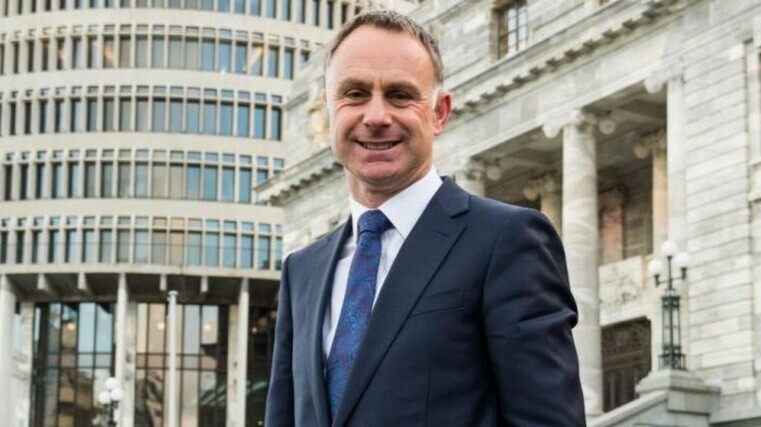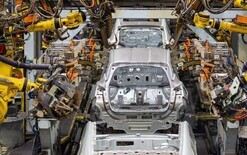Second emissions plan released

The government has unveiled its second emissions reduction plan, which outlines a path it says will keep New Zealand on track to meet its climate-change targets while supporting the economy to thrive.
Simon Watts, Minister of Climate Change, adds the plan sets the foundation to meet the country’s net-zero 2050 target as early as 2044 as well as delivering the first and second emissions budgets.
“New Zealand needs to be stronger in a changing climate,” says Watts, pictured. “We want our way of life to be protected and to minimise the impacts of climate change.
“We can have affordable and secure clean energy, an efficient competitive agriculture sector and a booming economy while meeting our commitments. This plan sets out how we can get there.”
The second emissions reduction plan (ERP2) has targeted actions in sectors of New Zealand’s economy that produce the greatest emissions – agriculture, transport, energy and waste. It also includes others that will be “critical” in meeting targets, such as the emissions trading scheme (ETS) and sustainable finance.
Watts says there are eight key policies that will have the greatest potential emissions savings over the next five years. These are:
• Targeting a network of 10,000 EV charging points by 2030.
• Introducing a regulated product stewardship scheme for refrigerants from 2025.
• Enabling more renewable energy projects through Electrify NZ.
• Recognising carbon capture, utilisation and storage in the ETS.
• Introducing agricultural emissions pricing by 2030 and incentivising the uptake of new technologies.
• Exploring private-sector partnerships to plant trees on low-conservation crown-owned land.
• Leveraging the Waste Minimisation Fund to enable resource-recovery systems and infrastructure to process organic waste.
• Improving organic waste management and landfill gas capture to increase landfill-gas recovery rates.
Watts says: “I want to thank everyone who took time to submit feedback on the draft ERP. As a result, new sections on technology and innovation, and building and construction, have been added.
“The private sector plays an important role in reducing New Zealand’s emissions. Its feedback on the draft plan provided further insights into work and areas for additional focus from the government.
“Achieving our goals will require collaboration across all sectors to reduce emissions, unlock renewable energy, foster innovation and leverage nature-based solutions. Our plan highlights significant progress already being made by businesses, showcasing ongoing efforts to drive meaningful change across.”
In his introduction to the plan, he adds: “Now is the time to lock in the infrastructure we need to support a low-emissions economy. We will create jobs and enable businesses to transition to electric alternatives faster by increasing renewable energy.
“We will see more New Zealanders switch to EVs by building charging infrastructure. New technologies to help reduce emissions will empower farmers to produce high-value products that will make them even more competitive on the world stage.”
There is a section covering transport in ERP2, which expands on actions being proposed. These include supporting public transport in our main cities. Others are:
• Enabling a network of 10,000 public EV charging points by 2030 and facilitating private investment in EV charging infrastructure.
• Reviewing regulatory barriers to decarbonising heavy vehicles, such as EVs and hydrogen.
• Promoting innovation through the low emissions heavy-vehicle fund.
• Continuing to support the aviation sector to decarbonise and working with other countries on low and zero-carbon shipping on key trade routes by 2035.
The government believes its target of 10,000 public EV charging points by 2030 will help reduce “range anxiety’” associated with the purchase of electric vehicles, which it says is a “major barrier” to uptake.
“The effects of 10,000 public charging points are estimated using relatively conservative assumptions in the absence of suitable empirical evidence to base any assessment on,” states the technical bulletin attached to the main ERP2 report.
“Modelling has assumed a modest improvement in EV uptake due to reduced range anxiety and that this will have a small effect on transport emissions.
“The EV proportion of all road kilometres travelled in 2030 is projected to increase from nine per cent in the baseline to 9.2 per cent with the policy.”
Refrigerants regulated product stewardship, meanwhile, will provide for mandatory participation in an accredited scheme to collect and destroy synthetic refrigerants, which are sometimes known as fluorinated or F-gases.
“Refrigerants and other synthetic greenhouse gases are already a declared priority product under the Waste Minimisation Act, which enables the regulations to be introduced.”
The government is also amending the first ERP to ensure it reflects the coalition’s approach to meeting New Zealand’s first emissions budget. Watt says: “Current projections indicate we are on track to meet the first emissions budget even with changes in policy.”





